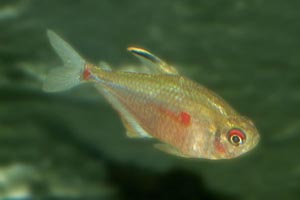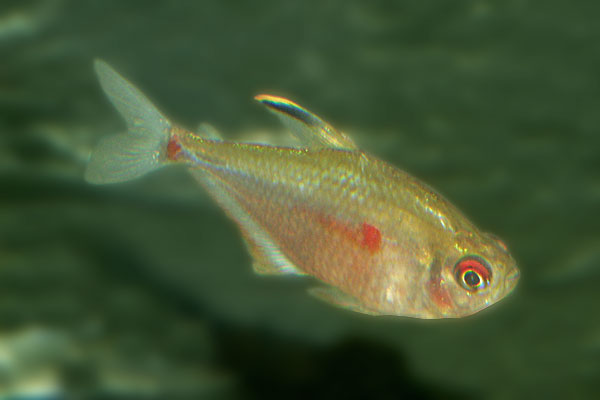

Species Profile | Images | Breeding Report | Similar Species

(Other members of the genus Hyphessobrycon)
ADULT SIZE: 8 cm
WATER CONDITIONS: Neutral
TEMPERATURE RANGE: 24-28 C
FOOD: Feed Hyphessobrycon erythrostigma live and dried foods
DISTRIBUTION: This species comes from Peru
AQUARIUM CARE: A typical shoaling species, that does well with other similar sized tetras. Its common name refers to the red spot in the centre of its body (where its heart would be?). It hails from the Peruvian (western) Amazon basin, where it lives in well aerated shallows. This characin prefers slightly acidic to neutral water, though precise conditions are not too critical for this hardy species. Tanks should have plants allowing some shade.
BREEDING: Male fish have elongated dorsal fins, so sexing pairs is not problematic, however breeding of this egg scatterer is difficult, and rarely achieved
Have you bred Hyphessobrycon erythrostigma? Why not fill in a breeding questionaire?, or examine existing Hyphessobrycon erythrostigma breeding reports
Other members of the genus Hyphessobrycon
Other characin species
Other species from Peru

The bleeding heart tetra gets its name from the heart shaped red spot on its body
BREEDING: Male fish have elongated dorsal fins, so sexing pairs is not problematic, however breeding of this egg scatterer is difficult, and rarely achieved
Have you bred Hyphessobrycon erythrostigma? Why not fill in a breeding questionaire?
Sorry no records.